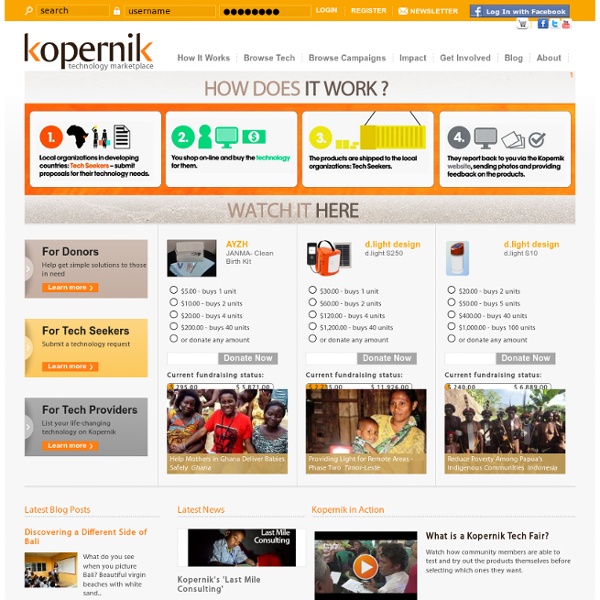



Hi Noroshi How Crowdfunding Could Help Cure Rare Diseases LONG BEACH, Calif. — By definition, rare diseases are hard to diagnose, receive little research funding, and are challenging to treat. One organization is trying to change all that through a crowdfunding model specifically aimed at helping those with the nearly 7,000 rare diseases in the U.S. Dubbed the Rare Genomics Institute, the non-profit organization could be considered a Kickstarter for genomics. The project first connects a patient with a research institution that’s willing to take their case, and then develops a budget that can be funded by friends, family and online supporters. The organization’s founder Jimmy Lin shared the stories of some of the patients using the service this week at TED. Anyone can view any patient's story on the Rare Genomics Insitute’s site, which describes the symptoms of the rare diseases that the patient is facing, then offers visitors a way to make a donation towards research. Image Credit: Ryan Lash
Startups Challenge Beth Kanter's Blog Ratio Juris: Toward a Philosophically Sound & Bioethically Sensitive Definition of Public Health Law Please Note: I’m hoping to receive (hence inviting) comments on this (either here or through e-mail) before penning the next draft, which will include material on the relation between the State and the pursuit of the Good (as one critical assumption or premise) and a small section treating the role of a certain take on the Constitution and the proposal outlined here. The final draft will be posted at SSRN. Public health law can be defined as the legal powers and duties of the state and/or other legal normative order(s) directed toward establishing, encouraging, and/or maintaining the necessary conditions for the health of individuals with respect to four types of functions and capacities: biological (e.g., well-functioning organs); physical (e.g., ambulatory); social (e.g., capacities to communicate); and mental (e.g., reasoning and emotional capabilities). Public health law is plausibly viewed as giving life to many of the necessary conditions for individual and social well-being.
Prove My Concept | Practical tools for entrepreneurial students interested in starting their own businesses Nonprofit Tech 2.0 Blog :: A Social Media Guide for Nonprofits Reduction in child mortality in Niger: a Countdown to 2015 country case study This article can be found in the following collections: Global Health;Paediatrics(Paediatrics-other) Copyright © 2012 Elsevier Ltd All rights reserved. Background The Millennium Development Goal 4 (MDG 4) is to reduce by two-thirds the mortality rate of children younger than 5 years, between 1990 and 2015. Methods We developed new estimates of child and neonatal mortality for 1998—2009 using a 2010 household survey. Findings The mortality rate in children younger than 5 years declined significantly from 226 deaths per 1000 livebirths (95% CI 207—246) in 1998 to 128 deaths (117—140) in 2009, an annual rate of decline of 5·1%. Interpretation Government policies supporting universal access, provision of free health care for pregnant women and children, and decentralised nutrition programmes permitted Niger to decrease child mortality at a pace that exceeds that needed to meet the MDG 4. Funding This article is made available free of charge, as a service to our users.
Postcode Lottery Green Challenge - Nick Christy (Winner): Water Recycling Shower Plan: This patented shower system reduces water and energy use and cost by 70 per cent without impairing enjoyment. Showering represents households' biggest use of water and second largest use of energy, but existing green solutions suffer from reduced water flow, length and temperature. This product combines an electrical element that heats the water, recirculation of warm water, and a heat exchanger that runs cooler water past hotter water. "Winning the Postcode Lottery Green Challenge kick-started us, gave us credibility and also gave us momentum. With the prize money I could hire engineers full time, which meant we then had a working prototype and we were also achieving goals. The shower prototypes are now really far advanced – about 90% of the components we need to buy in have been identified and about half of the bespoke design work has been completed. Nick Christy, is a British Chartered Accountant living in Australia. Water Recycling Shower website
Non-profit technology Nonprofit technology is the deliberative use of technology by nonprofit organizations to maximize potential in numerous areas, primarily in supporting the organization mission and meeting reporting requirements to funders and regulators. Types of technology do not differ between nonprofit and for profit organizations. Nonprofit technology is differentiated by specific strategies and purposes. Definitional Issues[edit] Due to the topic's inherent breadth of reach and the constantly changing nature of technology in general, the sphere of nonprofit technology is somewhat difficult to define. Technology use associated with nonprofits is not dedicated in nature, that is, technologies and specific uses of such technology by nonprofits cannot be linked solely to the nonprofit sector. Nonprofit technology uses[edit] Some technology programs are created specifically for use by nonprofit organizations. Benefits of Technology[edit] Social Media[edit] Sources of hardware and software[edit]